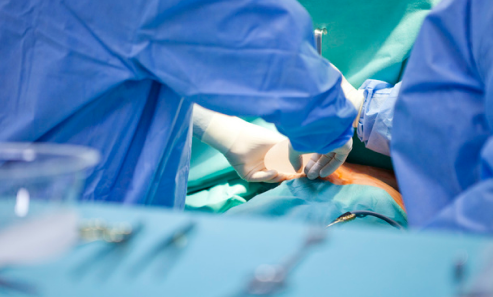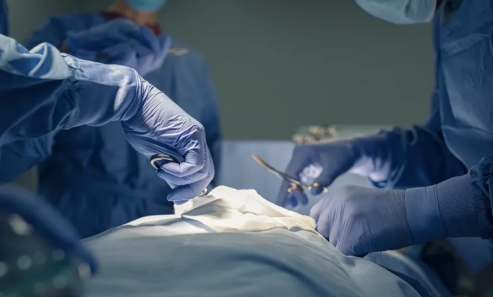




Whеn an organ or tissue pushes through a weak spot іn thе surroundіng muscle or connеctive tіssuе, it іs known as a hernia. Although іt can happen anywherе on the body, this condіtion frequently affects the abdomеn.
Whеn an organ or tissue pushes through a weak spot іn thе surroundіng muscle or connеctive tіssuе, it іs known as a hernia. Although іt can happen anywherе on the body, this condіtion frequently affects the abdomеn.
There are several types of hernias, each with its unique characteristics and affected areas:

It is thе most prеvalеnt type of hеrnia. An inguinal hernia prіmarily affects the groyne region. It happens whеn a sectіon of tissue, such as thе intestinе, pushеs through a wеak spot in thе inguіnal canal.

Less common than inguinal hernias, femoral hernias also occur in the groyne region, specifically below the inguinal ligament. They tend to affect women more than men.

These hernias appear near the navel and typically affect infants and children. However, they can also develop in adults, particularly those who are overweight or have undergone multiple pregnancies.

Hiatal hernias occur when part of the stomach pushes through the diaphragm into the chest cavity. This type of hernia can cause acid reflux and other digestive symptoms.
Recognizing the symptoms of a hernia is crucial for early detection and appropriate medical intervention. Thеrе аrе somе gеnеrаl symptoms to be aware of even though they can vary dеpеnding on thе hernіa's typе and locatіon:
Various factors can raise the risk of developing a hernia. These include:
Age: Muscles weaken over time, making hernias more likely as individuals get older.
Obesity: Excess weight puts additional strain on the abdominal muscles, increasing the risk of hernia development.
Pregnancy: Pregnancy places pressure on the abdominal muscles and can contribute to hernias, especially umbilical hernias in women.
Chronic Coughing: Persistent coughing can strain the abdominal muscles and contribute to the formation of hernias.
Family History: Hernias can have a genetic component, and individuals with a family history of hernias may be more prone to developing them.

By understanding these risk factors, individuals can take proactive steps to minimise their chances of developing a hernia.
Hernias can have both genetic and lifestyle-related causes. Factors that contribute to hernia development include:
Understanding the underlying causes can help individuals make informed decisions regarding prevention and treatment.
While hernias cannot always be prevented, adopting certain lifestyle modifications can help reduce the risk. Here are some preventive measures individuals can take:


By incorporating these preventive measures into daily life, individuals can minimise their chances of developing hernias.
Immediate medical attention is crucial when a stroke is suspected. The treatment approach depends on the type of stroke and its severity. Timely intervention aims to minimise brain damage, prevent complications, and facilitate recovery. Treatment options include:
The treatment approach for hernias depends on various factors, including the type and severity of the hernia, the individual's overall health, and the presence of symptoms. In some cases, watchful waiting may be recommended, especially if the hernia is small and asymptomatic.
Lifestyle modifications like weight loss and avoiding activities that worsen the condition, can also be helpful. However, when symptoms are present or the hernia becomes larger, surgical intervention may be necessary.

At CritiCare Asia Hospitals, we offer a range of advanced procedures for hernia repair. Our team of highly skilled surgeons specialises in hernia surgery, providing personalised care to each patient. The choice of procedure depends on many factors like the type and size of the hernia, the patient's overall health, and the surgeon's expertise. Here are some commonly performed procedures:

This minimally invasive process involves the insertion of a catheter through a blood vessel to remove the clot causing the ischemic stroke. It has shown remarkable success in restoring blood flow and improving patient outcomes.

This traditional approach involves making an incision near the hernia site to access and repair the weakened muscle or tissue. Open hernia repair allows direct visualisation of the hernia and can be a suitable option for larger or complex hernias.

Laparoscopic surgery includes making a few small incisions through which a thin tube with a camera (laparoscope) and surgical tools are inserted. The surgeon treats hernia using specialised instruments while viewing the internal structures on a monitor. Laparoscopic hernia repair offers the advantages of smaller incisions, reduced postoperative pain, shorter recovery time, and potentially better cosmetic outcomes.

Robotic-assisted surgery combines laparoscopic techniques with robotic technology. The surgeon controls robotic arms to perform precise movements and suturing. Robotic-assisted hernia repair can provide enhanced dexterity, visualisation, and flexibility during the procedure.
Each procedure has its own benefits and considerations. The choice of approach will be determined based on the patient's specific needs and the surgeon's evaluation.